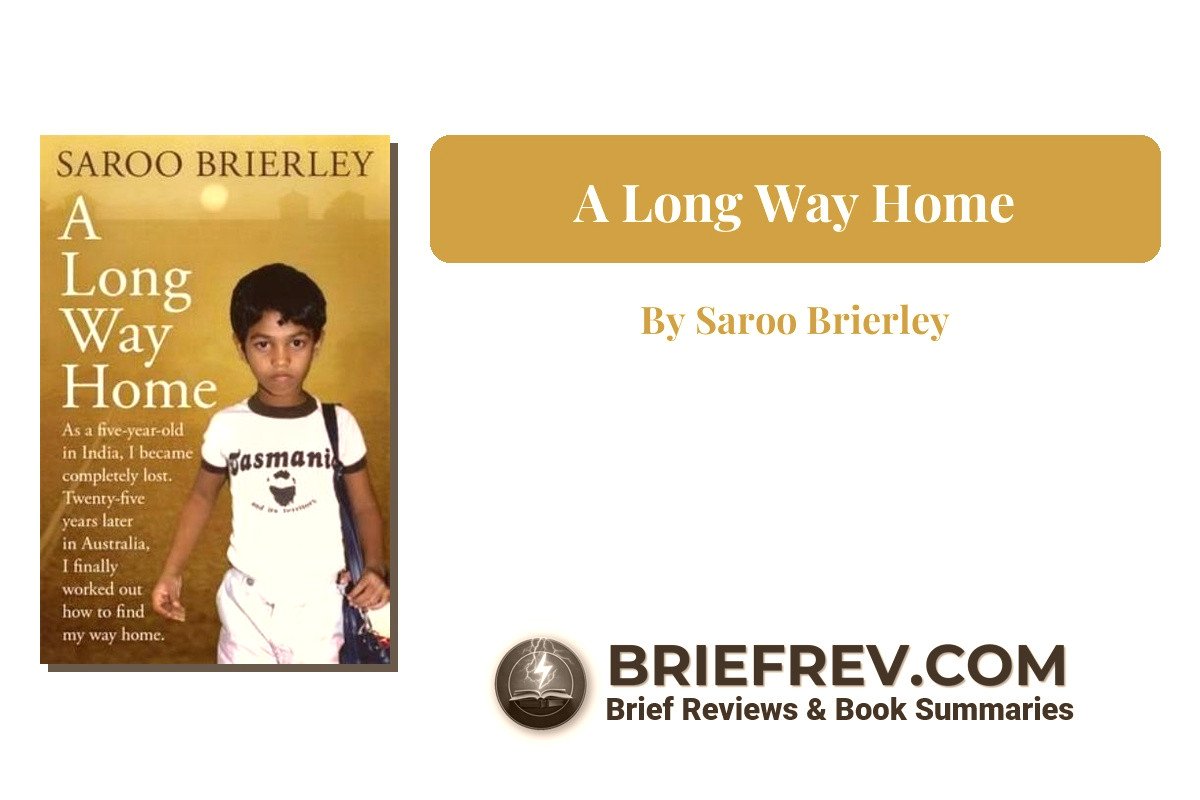A Long Way Home: A Journey of Loss, Identity, and Redemption
In a world where identity is often taken for granted, Saroo Brierley’s memoir, A Long Way Home, reminds us how deeply our sense of self is tied to place, memory, and family. At its heart, the book is a story of survival and the enduring human need to belong. It is a testament to the resilience of the human spirit and the power of hope, even when the odds seem insurmountable. Saroo’s journey—from a lost child on the streets of India to a young man searching for his roots across continents—offers a moving exploration of what it means to find your way home, both literally and emotionally.
What the Book Covers
A Long Way Home recounts the extraordinary true story of Saroo Brierley, who, at the age of five, was accidentally separated from his family in a small town in India. After boarding a train that took him over a thousand miles away from home, Saroo ended up alone in the bustling city of Kolkata. Unable to recall the name of his hometown or his family’s surname, he was eventually adopted by an Australian couple and raised in Tasmania. Decades later, using Google Earth and fragments of childhood memory, Saroo embarked on a remarkable quest to find his birth family. The book is both a gripping personal narrative and a broader reflection on identity, displacement, and the meaning of home. It is especially resonant for readers interested in memoirs, cross-cultural experiences, and stories of personal transformation.
Key Insights
One of the most powerful insights from the book is the way memory can serve as both a lifeline and a burden. Saroo’s early memories—of his mother’s face, the layout of his village, the train station where he last saw his brother—are fragmented but vivid. These recollections become the foundation for his search decades later. The memoir shows how even the faintest memories can carry emotional weight and guide us toward truth, even when logic and reason fall short.
Another compelling theme is the duality of identity. Saroo grows up in Australia, surrounded by love and opportunity, yet he never fully lets go of his Indian roots. His internal conflict—between gratitude for his adoptive family and longing for his birth family—illustrates the complexity of identity for adoptees and immigrants. The book doesn’t offer easy answers but instead embraces the idea that identity can be layered, evolving, and sometimes contradictory.
The story also highlights the role of technology in bridging human gaps. Saroo’s use of Google Earth to trace his way back to his hometown is both astonishing and deeply symbolic. It underscores how modern tools can serve deeply personal purposes, enabling connections that once seemed impossible. Yet, the technology is only a tool; it is Saroo’s determination, patience, and emotional courage that ultimately lead him home.
A Long Way Home also touches on the stark realities of poverty and child homelessness in India. Saroo’s early experiences—navigating dangerous streets, escaping exploitation, and surviving hunger—are harrowing. These chapters serve as a sobering reminder of the vulnerability of children in impoverished societies and the systemic issues that contribute to their suffering. The memoir doesn’t dwell on these issues in a political sense, but it brings them to life through Saroo’s personal lens.
Memorable Quotes
One of the most poignant lines in the book is: “Home is not just a place where you sleep at night, but a place where you are understood.” This quote encapsulates the emotional core of Saroo’s journey and the universal longing for connection and belonging.
Another memorable moment comes when Saroo reflects, “The questions I had didn’t go away. They just grew louder.” This line speaks to the persistent nature of unresolved identity and the quiet ache that can accompany unanswered questions about one’s past.
Why This Book Matters
A Long Way Home is more than a memoir; it is a meditation on the human need for roots and the lengths we will go to reclaim them. In an increasingly globalized world where displacement—whether by choice or circumstance—is common, Saroo’s story resonates deeply. It reminds us that no matter how far we travel or how much we change, the pull of home remains strong. The book is especially meaningful for readers interested in adoption, cross-cultural identity, and personal resilience. But at its core, it is a universal story—one that speaks to anyone who has ever felt lost and longed to be found.



